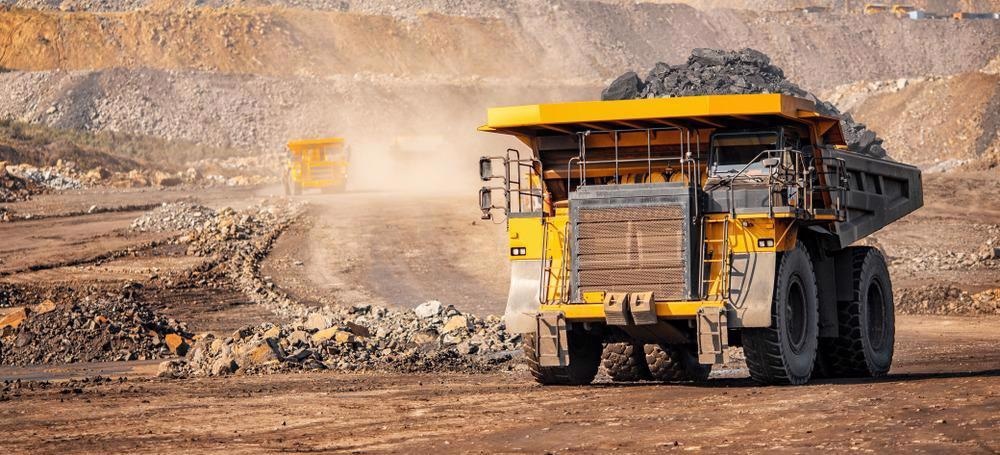In mining, complex mineralogy grades can challenge mine operations and ore extraction. Research has increasingly focused on discovering strategies to cope with this critical issue for the mining industry, with innovative technologies developed in recent years to improve the efficiency of processes. This article will provide a brief overview of the problems faced by the mining industry and analytical technologies employed to improve the ability of mining companies to exploit complex mineralogy grades.

Image Credit: Parilov/Shutterstock.com
The Challenges of the Modern Mining Industry
Modern society is built on the products of the mining industry. From construction materials to smartphones, laptops to medical devices, and roads to aircraft, vital resources once located far underground have been extracted in mines.
The modern mining industry has undergone a revolution in recent years driven by the necessity to address evolving demands. Technology and automation have increasingly been employed in projects, and disruptive innovations such as smart sensors, the Internet of Things, AI, and Big Data have allowed unprecedented real-time data monitoring and analysis. Sustainability and environmental remediation are also pressing concerns in the industry.
Another key challenge in mining is the exploitation of ever-deeper ore deposits. Dwindling resources have facilitated the need to search for resources in deep mines, and a challenge associated with deeper resources is the increasing complexity of mineralogical grades. For this reason, research has focused in recent years on developing techniques for analyzing complex mineral grades and improving the efficiency of extraction and processing.
The Effect of Complex Geology on Deep Mining Operations
Deep underground mines are a challenging and technical environment. Complex rock mechanics must be considered when designing mining operations, and deposits display characteristics such as strong rheology. Aside from the complexity of the mineral grades, deep mining operations present safety concerns, and mining disasters can cause catastrophic loss of life and equipment.
Temperature and pressure can change the morphology of rocks and mineral deposits. Geothermal gradient causes temperatures to increase with depth and increases metamorphic reaction. Similarly, pressure increases with depth.
Pore pressure, load pressure, and tectonic stress contribute to metamorphism, with more significant pressure producing a greater degree of metamorphism. Geologists and engineers designing deep mining operations must analyze and account for the effects of temperature and pressure on surrounding rocks and mineral deposits.
Processes for Analyzing Complex Mineralogical Grades
Geologists working in mines must identify the resource’s grade and variation. Aside from defining the deposit’s value, the type and concentration of mineral present in a deposit govern extraction methods and, consequently, the economic performance of a mining project.
Geometallurgy is the field that deals with mineral and rock analysis. A multidisciplinary field, it combines elements of geology, mineral processing, and downstream processes to provide accurate modeling of the ore deposit’s variability. It is a critical element of successful mine planning and management. Moreover, accurate and reliable mineralogical analysis improves mines' safety and economic performance by providing optimal mass balancing information.
Several processes are used in geometallurgy to analyze complex mineral grades. Developing cost-effective, reliable, and rapid analytical techniques is a crucial concern in the field. SEM offers reliable analysis when employed in automated mineralogy, but these processes are time-consuming and demanding. SEM and optical microscopy are used to evaluate morphology, grain size, and bonding structure in deposits.
XRD is another method used for this purpose and can analyze gangue mineral grades, providing outstanding details on them, but is not generally suited for analyzing precious and base metal ores. Additionally, this technique has a higher detection limit than some other processes.
Energy dispersive analysis can elucidate information on spatially specific compositions of elements. Another widely employed technology for analyzing mineral and rock samples is petrographic analysis. Several innovative approaches are currently being explored in research. Moreover, engineers and researchers can use complimentary thermal, chemical, and XRF analysis.
Information on the entire ore body must be retrieved to achieve accurate and reliable mineral grade analysis. This facilitates extensive sample volumes to map the mineral and ore variation reliably and efficiently in a mine. Methods must be selected based on cost, availability, precision, trueness, reliability, and time.
The Future
As ever-deeper ore deposits are exploited to extract vital minerals, accurate, reliable and rapid analysis of increasingly complex mineralogical grades is essential. Several advanced techniques are being developed in the current body of research to provide significant improvements in the field.
Artificial intelligence technologies are likely to play an increasing role in this area of research in the coming years, further improving the reliability and cost-effectiveness of mineralogical analysis. These technologies, such as intelligent sensors, advanced algorithms, IoT-connected devices, Big Data paradigms, and neural networks, are increasingly being employed in all mining areas, paving the way for the intelligent mine of the future.
References and Further Reading
Parian, M et al. (2015) Analysis of mineral grades for geometallurgy: Combined element-to-mineral conversion and quantitative X-ray diffraction Minerals Engineering 82 pp. 25-35 [online] sciencedirect.com. Available at:https://www.sciencedirect.com/science/article/abs/pii/S0892687515001934
Lucideon (2022) Testing & Characterization: Mineralogical Analysis [online] lucideon.com. Available at: https://www.lucideon.com/testing-characterization/mineralogical-analysis
Ames (2021) Geometallurgy [online] minerallurgy.com. Available at: https://www.lucideon.com/testing-characterization/mineralogical-analysis
Disclaimer: The views expressed here are those of the author expressed in their private capacity and do not necessarily represent the views of AZoM.com Limited T/A AZoNetwork the owner and operator of this website. This disclaimer forms part of the Terms and conditions of use of this website.